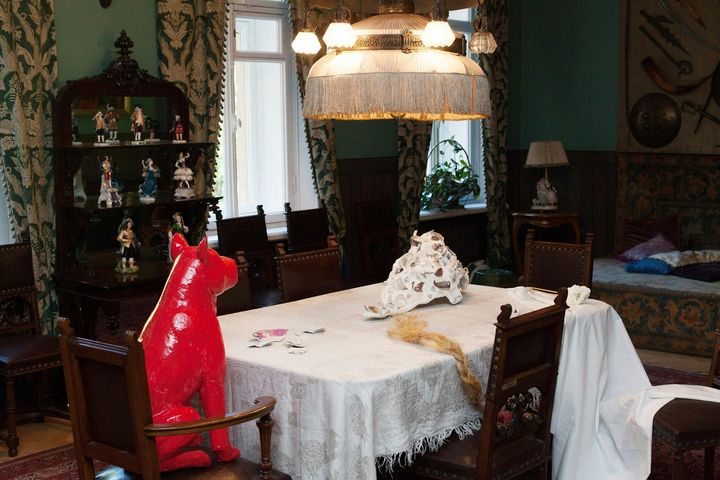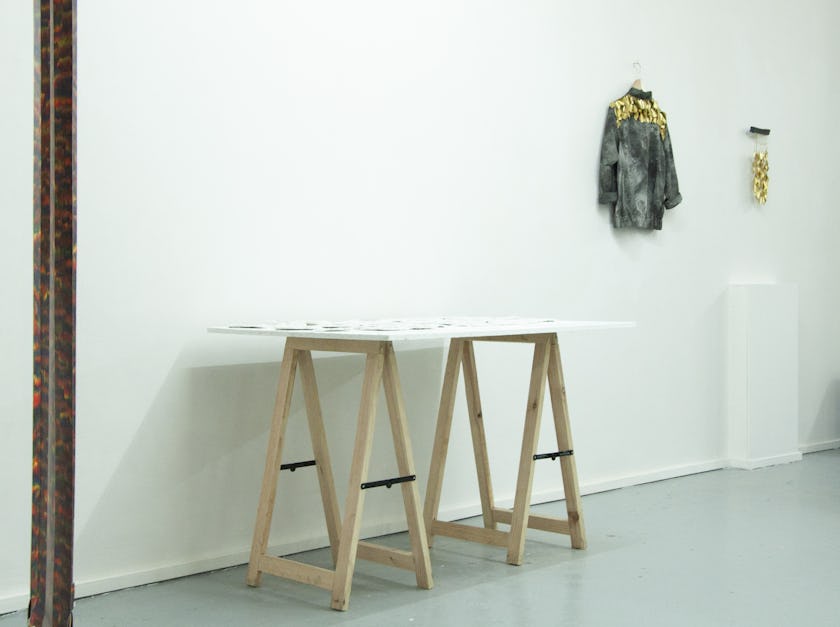Dasia's fairy tales
2018
Installation. Sculpture (concrete, metal, acrylic composite material, textile, find object), drawing, screen.

Installation view Dasia's fairy tales.
2018.
Chaliapin House Museum, St. Petersburg

Installation view Dasia's fairy tales.
2018.
Chaliapin House Museum, St. Petersburg

Installation view Dasia's fairy tales.
2018.
Chaliapin House Museum, St. Petersburg

Installation view Dasia's fairy tales.
2018.
Chaliapin House Museum, St. Petersburg

Object from the project Dasia's fairy tales.
2018.
Paper, fabric, glass.
178x73x64cm (70x28,7x25 in)

Object from the project Dasia's fairy tales. Fragment.
2018.
Paper, fabric, glass.
178x73x64cm (70x28,7x25 in)
Dasia's fairy tales
The installation took place in the historical halls of the museum dedicated to the life and work of the Russian opera singer Fyodor Chaliapin. The project is based on fairy tales and stories that were written down by Chaliapin's daughter, Dasia Chaliapina. Mysterious images and complex relationships between father and daughter became the basis of the work.
In collaboration with Katarina Sokolovskaya
Projects
- Unfinished project
- Shaving of the Christ
- Slowly Aging Children
- On the tip of the tongue
- In the Valley
- Suburbia
- Karate poetry
- My space 2.0
- My green crocodile
- Preparation of the transformer-bride
- Tell me, O Muse...
- Dasia's fairy tales
- Notes from the Morder
- Phonatory bands
- Pets
- My space

Q. What are the relationships and parallels between Russia at the beginning of the 20th century and now?


Q. How fantasy can be used to create alternative realities to escape propaganda and control.

Q. What is love?

Q. How have our relationships with others been transformed in a technologized world?

Q. How does one capture and experience existential soullessness of Russia high-rise suburbs?

Q. What is the character of the social network languages, particularly with the migration of images from scrins to reality and back?

Q. How can the anxiety of the modern world be expressed?

Q. How does one capture the estrangement of the inhabitants of Russia’s marginal districts?

Q. Why do humans have conflicted notions about privacy and openness, and a need and desire for individuality?

Q. How does the media use hatred and scandal for profit?

Q. What was the complex relationship between Fyodor Chaliapin’s and his daughter, Dasia?

Q. How does fantasy create images of desire?

Q. How does something out of the ordinary become habitual?

Q. How do we understand the complicated relationships between humans and their pets?

Q. What visual codes can be deployed create an artist's identity?